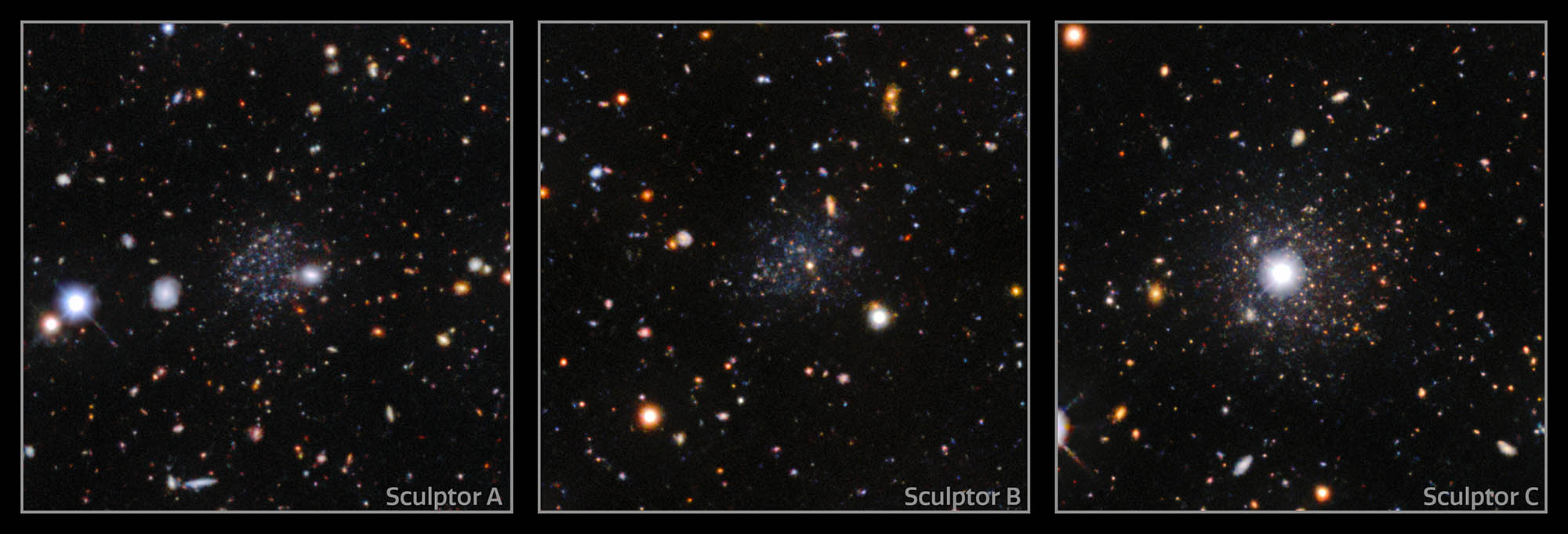DECam and Gemini South Discover Three Tiny ‘Stellar-Ghost-Town’ Galaxies

By combining data from the DESI Legacy Imaging Surveys and the Gemini South telescope, astronomers have investigated three ultra-faint dwarf galaxies that reside in a region of space isolated from the environmental influence of larger objects. The galaxies, located in the direction of NGC 300, were found to contain only very old stars, supporting the theory that events in the early Universe cut star formation short in the smallest galaxies.
Ultra-faint dwarf galaxies are the faintest type of galaxy in the Universe. Typically containing just a few hundred to a thousand stars — compared with the hundreds of billions that make up the Milky Way — these small diffuse structures usually hide inconspicuously among the many brighter residents of the sky. For this reason, astronomers have previously had the most luck finding them nearby, in the vicinity of our own Milky Way Galaxy.
But this presents a problem for understanding them; the Milky Way’s gravitational forces and hot corona can strip away the dwarf galaxies’ gas and interfere with their natural evolution. Additionally, further out beyond the Milky Way, ultra-faint dwarf galaxies increasingly become too diffuse and unresolvable for astronomers and traditional computer algorithms to detect.
That’s why a manual, by-eye search by University of Arizona astronomer David Sand was needed to discover three faint and ultra-faint dwarf galaxies located in the direction of spiral galaxy NGC 300 and the Sculptorconstellation. “It was during the pandemic,” recalls Sand. “I was watching TV and scrolling through the DESI Legacy Survey viewer, focusing on areas of sky that I knew hadn’t been searched before. It took a few hours of casual searching, and then boom! They just popped out.”
The images uncovered by Sand were taken for the DECam Legacy Survey (DECaLS), one of three public surveys, known as the DESI Legacy Imaging Surveys [1], that jointly imaged 14,000 square degrees of sky to provide targets for the ongoing Dark Energy Spectroscopic Instrument (DESI) Survey. DECals was conducted using the 570-megapixel Department of Energy-fabricated Dark Energy Camera (DECam), mounted on the U.S. National Science Foundation (NSF) Víctor M. Blanco 4-meter Telescope at Cerro Tololo Inter-American Observatory (CTIO) in Chile, a Program of NSF NOIRLab.
The Sculptor galaxies, as they are referred to in the paper, are among the first ultra-faint dwarf galaxies found in a pristine, isolated environment free from the influence of the Milky Way or other large structures. To investigate the galaxies further, Sand and his team used the Gemini South telescope, one half of the International Gemini Observatory, partly funded by the NSF and operated by NSF NOIRLab. The results from their study are presented in a paper appearing in The Astrophysical Journal Letters, as well as at a press conference at the AAS 245meeting in National Harbor, Maryland.
